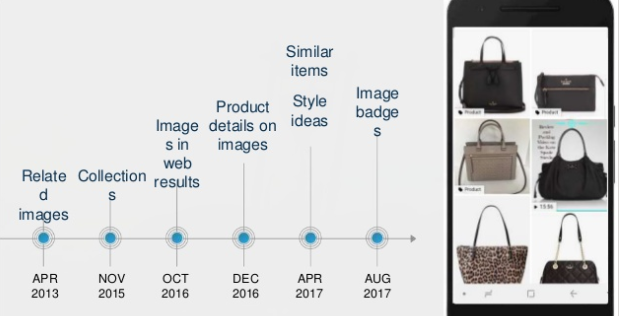
In 2017, ASOS introduced visual search on iOS, as a way of making product discovery easier and more interesting for their users. A year on, the Style Match tool, which trawls through an 85,000+ product inventory before matching products to the look in the image, has been rolled out worldwide across both iOS and Android.
ASOS has placed a big bet on visual search, and for good reason. Pinterest[1] has reported a 100% year-on-year increase in Pinterest Lens users, with 600 million visual searches made every month.
The visual search ecosystem is also growing rapidly, with innovations from Google, Amazon, eBay, AliExpress and Wayfair in just the last year.
With this proliferation of visual search adoption, could this cause a snowball effect in the retail industry as others look to jump on the trend? More interestingly, for us as search engine marketers, how will Google’s own visual search engine evolve to compete with retailers like ASOS, who could quickly become the default visual search engine for mobile shoppers?
A brief history of visual search
Source: Distilled.net[2]
To understand how Google’s visual search engine could develop in the future, we need to step back in time to understand the progress they’ve made so far. In the last five years, Google has come a long way from being able to serve images that are mildly related to a search query. Now the algorithm is able to understand the context behind a query, so they can better serve image results that satisfy user intent. This has completely changed the retail landscape where


